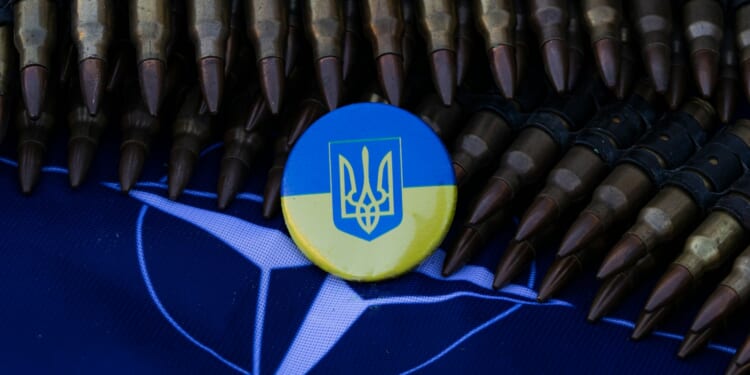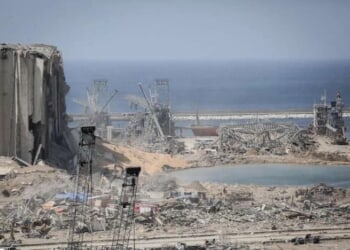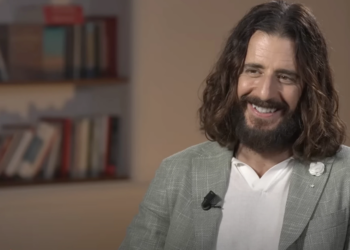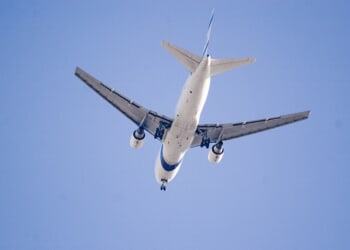Lord Ashcroft KCMG PC is an international businessman, philanthropist, author and pollster. For more information on his work, visit lordashcroft.com.
One of the greatest challenges facing NATO in its 76-year history has not come from outside threats, but from within: the real possibility of the alliance falling apart.
In 2024, as Donald Trump surged in the US presidential polls – fuelled in part by his “America First” rhetoric and complaints about “freeloading Europe” – the prospect of the United States withdrawing from NATO felt alarmingly real.
European complacency, which had lingered for decades, began to subside.
Member states scrambled to signal their commitment to defence, pledging to raise military budgets well above the 2.5 per cent of GDP average, and declaring the need for Europe to defend itself. These were reasonable arguments, albeit tainted with irony coming over a decade into a raging war on the continent. It was even rumoured that Mark Rutte was chosen as NATO’s Secretary General largely for his behind-the-scenes ability to act as a “Trump-whisperer”.
Tensions rose as NATO prepared to host its first summit with newly re-elected President Trump. His unpredictability and frequent volatility left many member states nervous. Only days earlier, Trump had cut short his G7 appearance and returned to Washington, skipping a planned meeting with Ukrainian President Volodymyr Zelenskyy. Now, the stakes were higher: NATO needed not only to keep the US in the alliance, but to preserve American military assets in Europe and its support for Ukraine.
Despite the bold European declarations about rebuilding their militaries and “owning” the Ukraine war, the reality is that true strategic autonomy remains years – if not decades – away. In short, Europe still needs America, and America cannot be allowed to walk away.
The Netherlands, as host, pulled out all the stops. Knowing Trump’s fascination with royalty, the Dutch ensured he was hosted by King Wilhelm-Alexander and was the only leader invited to stay overnight in the palace. Ahead of the summit, Mark Rutte made headlines by calling on all NATO states to commit to a historic 5 per cent of GDP defence target. With the exception of Spain – unwilling to match the rest – all members quickly complied.
But the headline number masked some creative accounting. Member states agreed to allocate 3.5 per cent of GDP to actual defence procurement – restocking ammunition, upgrading air defences, and acquiring new weapons systems. The remaining 1.5 per cent would be spent on supporting infrastructure, much of which could be classified as civilian spending. In the lead-up to the summit, allies were also permitted to count their Ukraine-related spending towards the 5 per cent, easing fiscal pressure on their national budgets.
The UK government went a step further in massaging the figures. It included national security funding in its defence figures, allowing Keir Starmer to suddenly revise his 2027 target of 2.5 per cent to a surprising 4.1 per cent on the eve of the summit.
This numbers game helped the summit run smoothly. After a grand dinner and his night at the Royal Palace, President Trump appeared in high spirits. At a press conference, he said he saw “many good leaders worried about their countries”, respectfully asking America for help – a message of dominance that played well with his base back home, increasingly uneasy over US involvement in the Iran conflict.
Secretary General Rutte’s joking reference to Trump as “Daddy” only reinforced the dynamic.
As for Ukraine, simply securing President Zelenskyy’s attendance of the summit and a bilateral meeting with Trump was seen as a diplomatic win. While there was a fair criticism of the summit’s final declaration as a watered-down statement notably softer on Russia than in previous years, one can only hope that this reflects Trump’s desire to succeed in negotiations with Vladimir Putin in bringing the war in Ukraine to an end – especially now that the Middle East appears to have calmed, at least for the moment.
The outcome of such negotiations must be carefully scrutinised. Any resolution that rewards aggression or undermines Ukraine’s sovereignty would mark a failure not only of NATO’s resolve, but of Europe’s moral responsibility.
With Russia preparing for its summer offensive, Ukraine quietly welcomed the absence of any definitive statement ruling out its future NATO membership. In the current climate, that alone may count as a diplomatic success. But it cannot be the end of Europe’s ambition.
Ukraine’s security—and victory—must not hang on symbolism alone. Europe must now turn declarations into delivery, step up its military support, and ensure that any future peace is forged on terms that secure Ukraine’s sovereignty, territorial integrity and long-term deterrence.
Anything less would not only betray Ukraine but erode the credibility of NATO itself.




![Man Arrested After Screaming at Senators During Big Beautiful Bill Debate [WATCH]](https://www.right2024.com/wp-content/uploads/2025/06/Man-Arrested-After-Screaming-at-Senators-During-Big-Beautiful-Bill-350x250.jpg)












